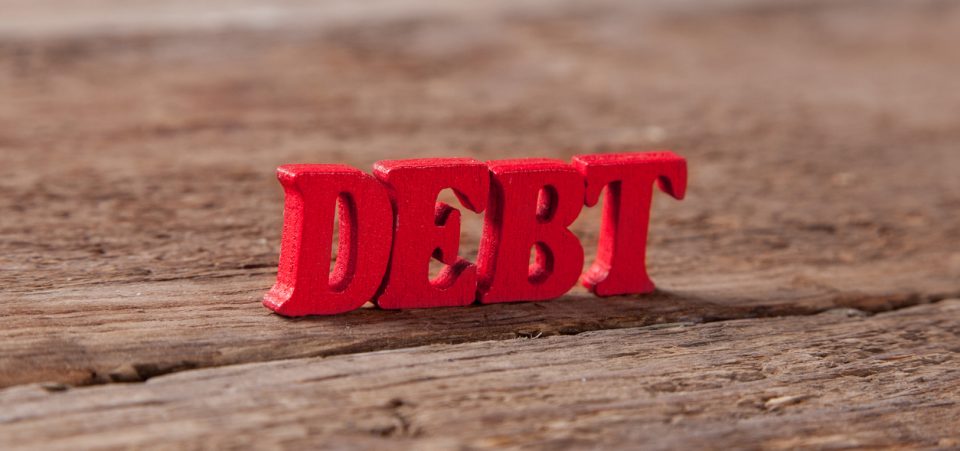U.S. National Debt is Holding America Hostage to Security and Economic Risks
The U.S economy has entered a phase of extreme risk. Apart from the fallout from a potential war with Russia, Americans must sooner or later confront their enormous and growing national debt.
It happens that, according to conservative estimates, the U.S. national debt stands at some $21.1 trillion. It was less than $20.0 trillion when Barack Obama left office and, around the time the “Great Recession” began, it was a nostalgic $9.2 trillion. The debt has more than doubled. It has almost tripled, in fact. (Source: “The Daily History of the Debt Results,” TreasuryDirect, last accessed April 12, 2018.)
Some economists argue that national debt or public debt—that is, the debt that the government accumulates—is not a terrible thing. The reason is the U.S. dollar. Unlike a member of the eurozone, such as Spain or Greece, the United States can print its own money—and pay back what it owes.
There is the problem of inflation. And in a modern economy, especially one founded on Anglo-American Protestantism, inflation is a bad thing (although so is debt). But even if the United States “owns” the highest amount of debt in the world, in theory, it’s not a bad thing. Because the U.S. can print its own money, it can secure more debt—selling Treasuries to foreign buyers.
More importantly, the U.S. can continue to borrow and spend without having to increase taxes. In other words, having the ability to print your own money is a great invention.
So That’s Why America Dropped the Gold Standard
No wonder the United States opted out of the gold standard. It is thanks to that virtuous (or vicious, depending on your financial morality) mechanism that President Donald Trump is able to promise and deliver tax cuts while also promising massive investments to renew infrastructure.
Indeed, from Trump’s infrastructure perspectives, the national debt can also serve the public well. If the government uses that debt to invest in such things as hospitals, schools, highways, bridges, and utilities, it generates tools for economic growth. These uses of debt are investments in the future. They create value and help others produce more value.
Consider Dubai or Qatar. These countries have created a private and highly profitable tourism industry by investing funds earned through the sale of petroleum and natural gas—both of which are state resources. Norway has gone one step further; it has invested the money earned from oil into the world’s largest sovereign fund. The interest alone on that sovereign fund pays for many of Norway’s famous social services.
A proper and publicly funded infrastructure helps the private sector maximize its profits. Even public healthcare has its economic advantages. For example, in Canada or France, both of which have excellent government-funded and universal healthcare systems, private businesses do not have to offer employees private medical insurance plans as perks.
Companies can convert the money that American companies waste on health insurance for raises or earnings. Moreover, when employees lose their jobs, they don’t have to suffer any health consequences.
In general, the public debt serves as a lubricant for business. That is, when it’s used to fund services and infrastructure that have a public utility—when they encourage the economy. Of course, this theory; in practice, debts have a way of becoming a problem. Yet, by and large, there are more benefits than disadvantages.
Everything Has a Limit
As usual, there is always the proverbial catch. The United States has two such interrelated “catches.” One is the fact that, whereas it invested billions of dollars in infrastructure in the post-World War II period—the Interstate Highway System being just one of them—after the 1970s, it seems that much of the public purse has been used up by national security.
This spending has increased exponentially since 2001. The estimates of what the U.S. has spent—and continues to spend—on the military and wars since 2001 are over $2.8 quadrillion. Yes, quadrillion is a real number. It comes after trillion. (Source: “Cost of National Security,” National Priorities Project, last accessed April 12, 2018.)
The defense sector corporations that benefit from this spending are private. Investors can buy their shares and, by and large, earn a tidy sum doing so. Indeed, defense stocks might be just about the safest investments in the stock market (for now, anyway). However, few Americans benefit.
The public at large does not see any return in better services. They have a great defense, yes. But, if America had a less aggressive foreign policy, there might not be a need for such intense use of debt and taxpayers’ money to build up the military.
To sum up, America’s ability to exploit debt allows it to fund military bases all over the world and a massive military-industrial machine. Therefore, if someone suddenly shut down the debt spigot, the United States’ safety would suffer a major blow.
As it happens, that “someone” exists. Its name is China.
China owns well over $1.0 trillion of U.S. debt. It’s about five percent of the total U.S. debt of $21.1 trillion. But it’s about 20% of the $6.3 trillion of the total from Treasury bills, notes, and bonds that foreign countries own. The American people, the government, and other domestic entities own the rest of the debt. (Source: “U.S. Debt to China: How Much Does It Own?,” The Balance, March 22, 2018.)
Why is China’s debt ownership a problem for the United States? Simply put, the fact that China, more of a commercial ally than a political one, owns such a significant chunk of U.S. debt represents one of the main risks to America’s economic and financial stability. Should Trump, or any other president, decide to “get tough” with tariffs, or engage in a foreign policy that challenges China or its allies and interests, Beijing can retaliate. It simply threatens to stop all purchases of U.S. Treasury bills—while selling off what it owns.
America Has Reached a Crucial Moment in Debt
America has reached a critical point now.
Trump has threatened to launch a trade war with China, insisting on tariffs for many Chinese-made goods. The Chinese have reached a compromise for now. They are not sure whether Trump is bluffing. The president’s abrupt turns on points that he seems especially adamant about (like Syria or the Trans-Pacific Partnership) may have helped Trump, the real estate tycoon, in business deals. But, in dealing with China, an ambitious and emerging power, crying wolf can backfire.
Therefore, the Chinese have made sure to play their insurance card: the U.S. debt. The fact that Beijing authorities could, if pushed, reduce or stop altogether buying U.S. Treasuries would cause 10-year U.S. bond yields to spike.
And a sudden rise in yields would make it much more expensive for U.S. businesses—not to mention consumers—to borrow. Sales of big-ticket items, from cars to appliances, would slow, causing a major recession. The U.S. would also lose its ability to print more money to get out of it, because a hypothetical (for now) Chinese jettisoning of U.S. Treasuries would cause a collapse of the U.S. dollar.
Don’t Bring Poker Cards to a Chess Match
The trade tensions are not the only problem. China could use the “debt bomb” if the U.S. attacked Syria and/or Iran. China is an ally of both, and has no interest in disrupting vital supply routes. Meanwhile, the U.S. government’s budget deficit is rising and it could add some $12.4 trillion in debt between 2019 and 2028. (Source: “The Budget and Economic Outlook: 2018 to 2028,” Congressional Budget Office, April 9, 2018.)
That means the U.S. debt could exceed $33.0 trillion in 2028. By that time, China might well be the world’s leading economy.
That’s an optimistic scenario, by the way. It’s based on the favorable economic conditions (that is, a period of apparent rising employment demand and stock markets at record highs). It does not account for potential recessions, nor does it account for a trade war with China or a major war with Russia. Note that creditors may stop lending to the U.S. altogether if China launches its debt retaliation.
How would the U.S. continue to afford its massive military budget? How would it fight the wars it appears to be getting mixed up in again? It might be wise to review the number of U.S. military engagements and unilateral trade—or other hostile—policy maneuvers. The stakes have reached too high a point for Trump to bluff like a poker player. especially given that America’s adversaries play chess.






